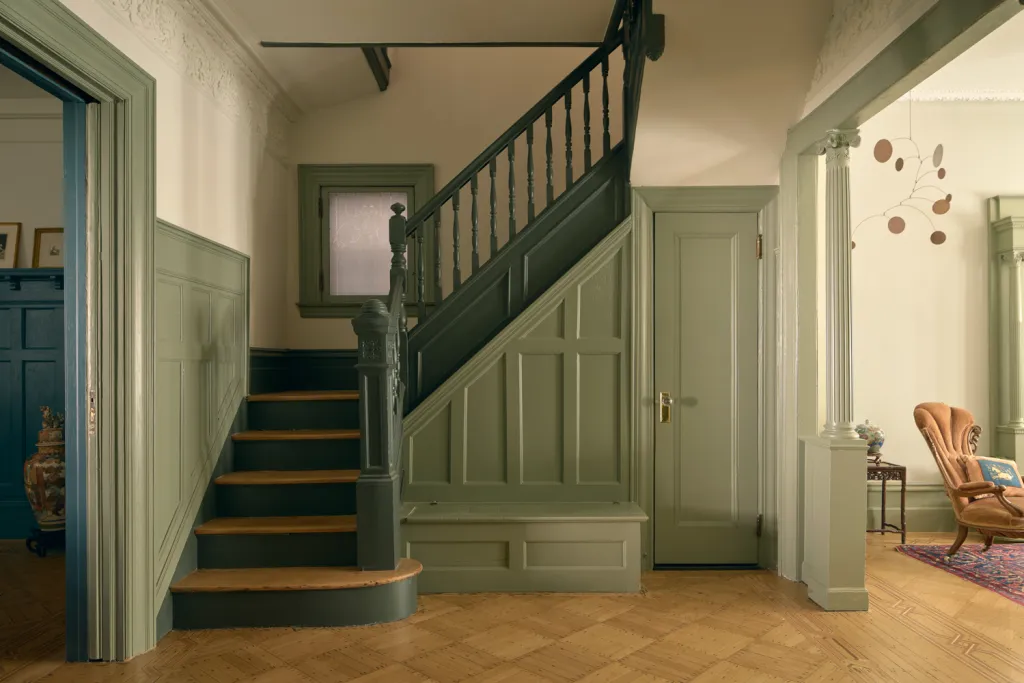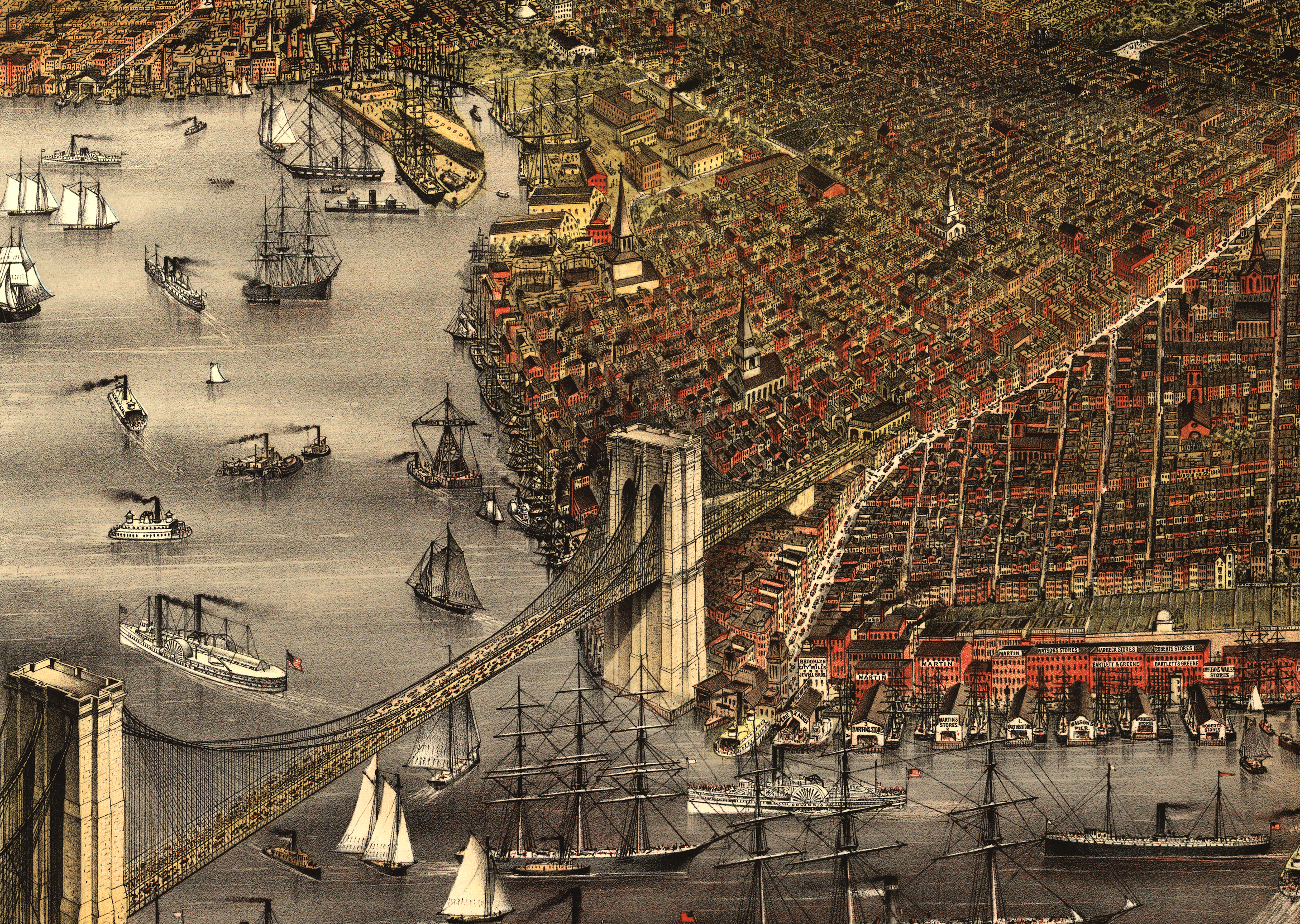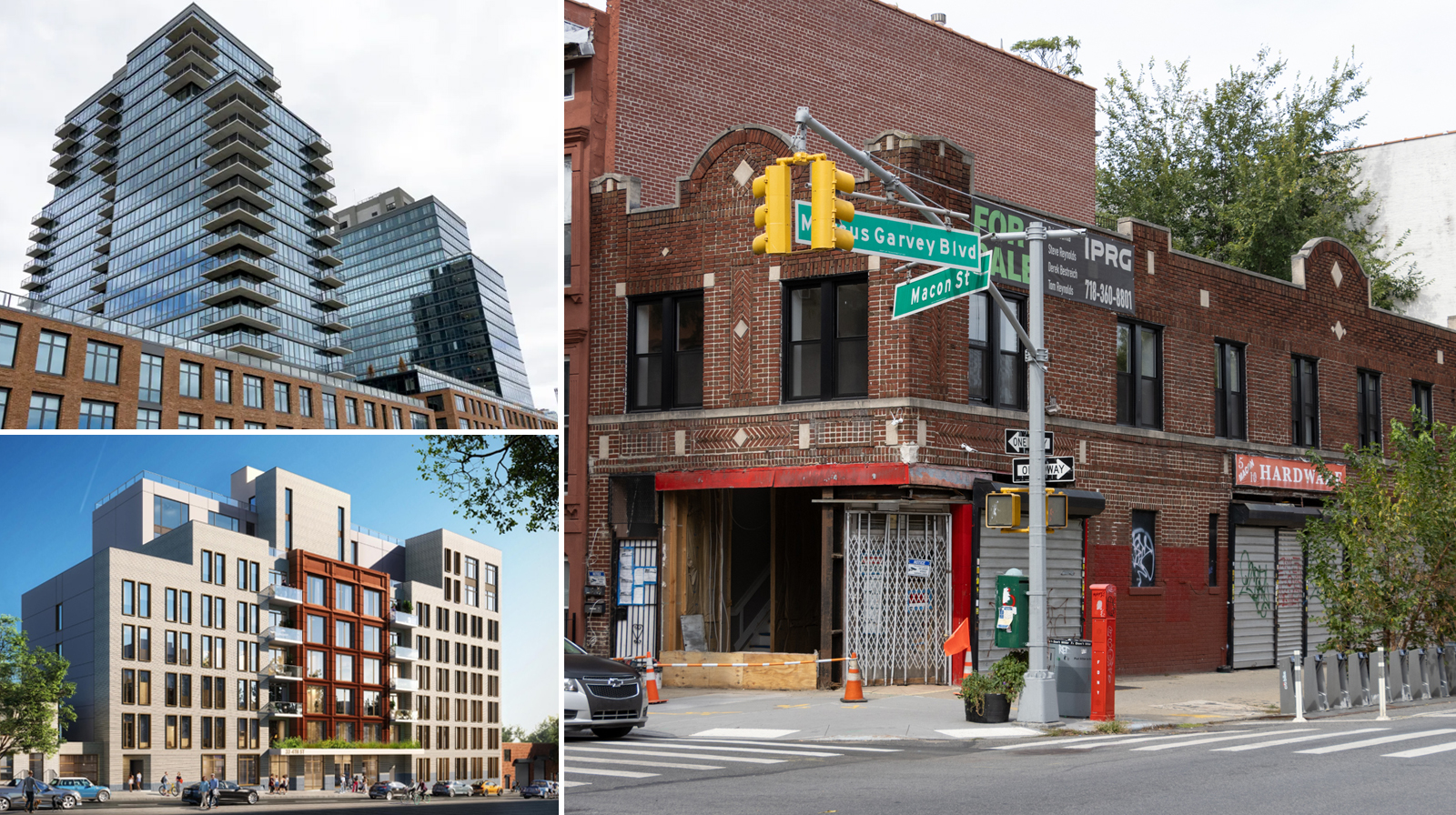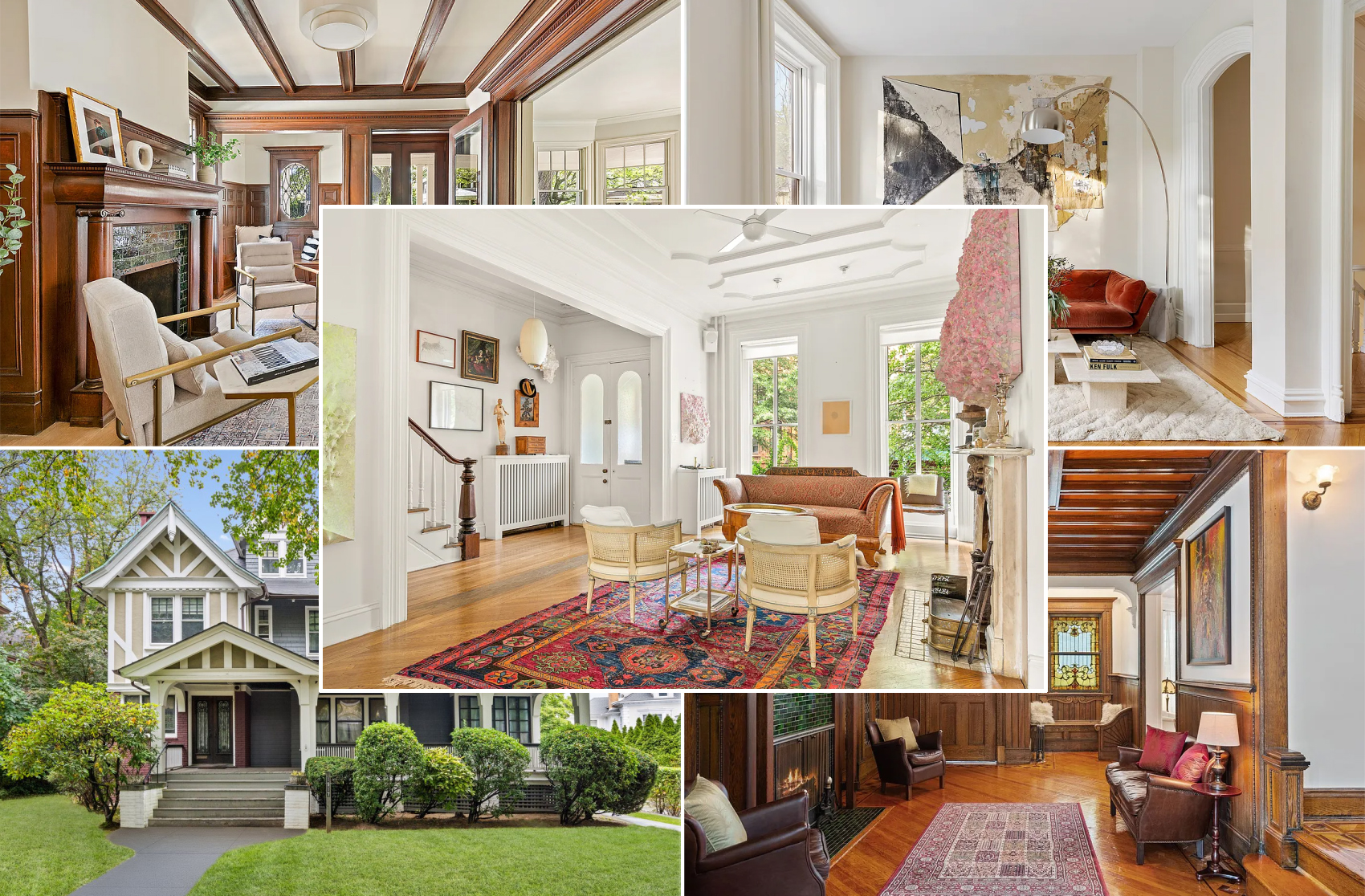Open House Picks
Prospect Lefferts Gardens 146 Rutland Road Brown Harris Stevens Sunday 1-3 Archive! $1,225,000 GMAP P*Shark Crown Heights 1269 Carroll Street Douglas Elliman Sunday 12-2 $985,000 GMAP P*Shark Crown Heights 704 Sterling Place Corcoran Sunday 2-4 $919,000 GMAP P*Shark Bedford Stuyvesant 214 Macon Street Aguayo & Huebener Sunday 1-3 $550,000 GMAP P*Shark

 Prospect Lefferts Gardens
Prospect Lefferts Gardens
146 Rutland Road
Brown Harris Stevens
Sunday 1-3 Archive!
$1,225,000
GMAP P*Shark
 Crown Heights
Crown Heights
1269 Carroll Street
Douglas Elliman
Sunday 12-2
$985,000
GMAP P*Shark
 Crown Heights
Crown Heights
704 Sterling Place
Corcoran
Sunday 2-4
$919,000
GMAP P*Shark
 Bedford Stuyvesant
Bedford Stuyvesant
214 Macon Street
Aguayo & Huebener
Sunday 1-3
$550,000
GMAP P*Shark





At least one “staid” thing about Park Slope are the frumpy fashions on all of those grumpy PS stroller moms. In fact, maybe the reason some people find PS staid is because it’s essentially become a nursery for the rich. I mean, when a nabe is overrun by stroller moms and a suffocating sense of entitlement, isn’t that going to make it seem fairly “staid”? The sound of gunshots have absolutely nothing to do with it.
I wish the folks who live Clinton Hill would quit trying to annex Fort Greene, i.e. Adelphi Street. I can see why. FG is very desirable. Even b’stoner had to have a post tour meet up in a FG restaurant. So, while Clinton HIll will continue to try to be FG…just leave us and our streets alone.
Anyway, back to the open houses. Macon St house seems incredibly cheap given recent comps. I wonder what the catch is – and why they couldn’t post even one interior photo. Come on, if you say there are details then there must be something in there to do a close-up of no matter how trashed it is.
But listing a Bed-Stuy property with Aguayo & Huebner seems counterintuitive already.
They have another BS property listed for 719K which is only 3 floors with much worse train access (unlike Macon St.’s A & C access), and much less potential IMO – but it’s “finished.” I wonder if A&H understands why most people buy in BS.
Browerpark gives a very good explaination of Brooklyn wealth of that era. If I might add a few points: the wealthy made their homes all over Brooklyn and in some places people might find surprising. If you get a chance, check out Highland park, I believe it’s the highest point in Brooklyn, it’s surrounded by cemeteries and bounded by the old Interboro expressway (now the Jackie Robinson expressway) but still has some huge Mansions that you would not believe survive to this day. Down the road on Bushwick Avenue near the intersection of Myrtle and Bushwick Avenues are several old “Brewer’s mansions” from when Brooklyn had several breweries in one neighborhood; Bushwick. President street in Crown Heights also has spectacular mansions along large stretches. On a side note, I once took a leasurily stroll into one of the old brooklyn cemeteries around this area; I think it was called Union Field, it was like stepping into another age. As far away from Brooklyn as if I stepped off a boat in China. The cemeteries are well mainatained and very quiet, not for everyone since safety is always a factor in isolated places but on a beautiful day in fall or spring,you can see why people used to picnic in these old cemeteries back in the Victorian era.not a person in sight and endless fascinating reading material on the memorial vaults and tombstones. They are probably the last undiscovered secret in Brooklyn.
To expand on 8:54’s concise and I believe correct account–there was a lot of wealth post civil war, and rich folks wanted large estates. New York and Brooklyn were mostly unpopulated back then, so these were lovely, bucolic areas in which to build–Brooklyn Heights was first suburb, had the most ferries, and spawned exurbs behind it–Carroll Gardens, Park Slope, etc. So these nabes had developments on spec–lavish, but less so than your own private mansion. If you wanted a lot of undevelped land, you had to head across Flatbush. Then there was a huge depression in the 1870s and the era of those great mansions passed. By the time development started up again, tons of immigrants had arrived and housing needs changed.
Anon at 7:23–I love you! Just when I felt like I was going to be bored in the privacy of my own home, you rescued me!
“Can someone please explain to me why there is so much good housing stock east of Flatbush Avenue? Why are so many of these homes stacked with so much more details then homes west of Flatbush Avenue”.
Way back in the 1870’s, when Clinton Hill and Crown Heights were indeed, very wealthy areas, most of the streetscapes were very different that today. Picture Clinton or Washington Avenues with only the free standing mansions, picture the two Pfizer homes with nothing next door on either side. The same is true of Crown Heights, where on St. Mark’s Avenue, between Nostrand and New York, you have now have large apartment buildings. In the 1870’s there were only 5 mansions on the entire block, all surrounded by expansive grounds. Today, only the Dean Sage Mansion remains, and it is not the grand lady she used to be. As the 19th century ended, these areas, as well as much of Bed Stuy, filled in with blocks of solidly upper middle class row houses. There was as much money in these communities as in the Heights and Park Slope. People who made their homes there were captains of industry – the Pratts, Pfizers, Woolworths, Underwoods and Strauss’.
When these neighborhoods fell on hard times in the 20th century, no one could afford to renovate, or as a friend calls it – wreckorate. The one unintended result of dire poverty is that many of these houses were never modernized, who could afford it? Partitions were put in, and kitchenettes made out of closets and dressing rooms, and some homes stayed in families for generations, untouched, or were just painted. That’s why there are so many detail- filled home still exist in these neighborhoods. That’s also why some of them are so incredible, and worth the effort to bring them back to glory.
“how …can[the Rutland Rd. house]be marketed as a possible conversion to a two family?”
A handful (20–30?) of the 600 homes in Lefferts Manor got two family c. of o.s many years ago (presumably through a NYC error). These are grandfathered in with that status. AFAIK most are currently used as one family, like this house.
—————————————-
“Can someone please explain to me why there is so much good housing stock east of Flatbush Avenue? Why are so many of these homes stacked with so much more details then homes west of Flatbush Avenue. I was under the impression that all of the rich and wealthy back in the late 1800’s and early 1900’s settled in areas like Park Slope, Cobble Hill and Brooklyn Heights. Am I mistaken?”
“The Hill” (present day Ft. Greene and Clinton Hill) was probably the most well-to-do part of Brooklyn in the late 19th Century. Crown Heights was also extremely wealthy (note the presence of the Union League Club in CHN). Lefferts Manor was developedas a substantial upper middle class area, although not in the same class as the previous two areas.
For all of you who say Park Slope is dull, I’ve got news for you: I was bored by a guy in Clinton Hill in broad daylight not two months ago. A friends of mine was bored on his front stoop twice in Lefferts Manor.
And don’t drag out the statistics. We all know most people who get bored, get bored by people they know. That has nothing to do with your or my danger of getting bored ourselves, anywhere. People who really know a neighborhood know where the boring parts are and where you can walk in the middle of the night and be entertained. You just have to use common sense.
This is the big city, people. You can get bored in Park Slope, in Brownsville, in midtown or on the Upper East Side.